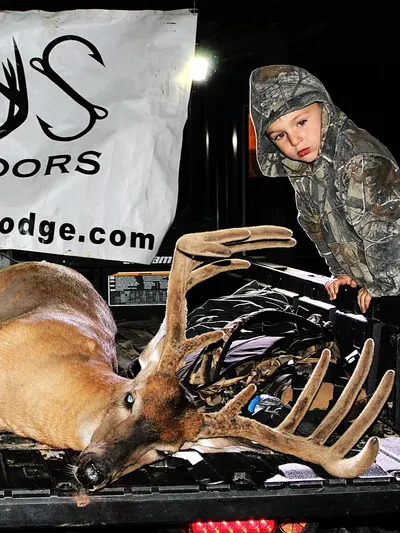Notifications
ALL BUSINESS
COMIDA
DIRECTORIES
ENTERTAINMENT
FINER THINGS
HEALTH
MARKETPLACE
MEMBER's ONLY
MONEY MATTER$
MOTIVATIONAL
NEWS & WEATHER
TECHNOLOGIA
TV NETWORKS
VIDEOS
VOTE USA 2026/2028
INVESTOR RELATIONS
DEV FOR 2025 / 2026
ALL BUSINESS
COMIDA
DIRECTORIES
ENTERTAINMENT
FINER THINGS
HEALTH
MARKETPLACE
MEMBER's ONLY
MONEY MATTER$
MOTIVATIONAL
NEWS & WEATHER
TECHNOLOGIA
TV NETWORKS
VIDEOS
VOTE USA 2026/2028
INVESTOR RELATIONS
DEV FOR 2025 / 2026
About Me
 Delta Heritage Lodge
Delta Heritage Lodge Delta Heritage Lodge, nestled in the heart of the Arkansas Delta and less than 5 miles from where the Arkansas meets the Mississippi River, offers a prime vantage point on the Mississippi Flyway. Whether you're hunting in our unique flooded timber, expansive flooded fields, or along the mighty Mississippi itself, our location—surrounded by our privately-owned rice and bean farms adjacent to timberlands—provides an authentic Arkansas hunting experience. From the moment you arrive at our lodge to the exciting instant you pull the trigger, our goal is to make every hunt memorable. Beyond morning duck hunts, we offer evening speck goose hunts and trophy whitetail hunts, with opportunities to relax at the lodge or enjoy a round of skeet shooting. At Delta Heritage Lodge, the possibilities are endless for discovering your hunt of a lifetime in the Arkansas Delta.
 Delta Heritage Lodge -
December 2, 2024 -
Business -
Predator hunts with thermal
speck hunting guides Arkansas
-
216 views -
0 Comments -
0 Likes -
0 Reviews
Delta Heritage Lodge -
December 2, 2024 -
Business -
Predator hunts with thermal
speck hunting guides Arkansas
-
216 views -
0 Comments -
0 Likes -
0 Reviews

Speck hunting, or hunting specklebelly geese, is a favorite among waterfowl hunters. These geese are known for their migratory patterns and presence in various parts of North America, including Arkansas. However, hunting them, especially in low light conditions or dense fields, can be quite challenging. Fortunately, advancements in thermal imaging are changing the way hunters approach speck hunting. The introduction of thermal imaging technology offers a way to spot, track, and hunt these geese with greater efficiency, making every hunt smarter.
Thermal imaging technology allows hunters to "see" in total darkness by detecting heat signatures. Everything that has a temperature, whether living or non-living, emits infrared radiation. Thermal scopes and thermal monoculars pick up this radiation and display it as images, turning the heat into visible graphics on a screen. For speck hunting, this means hunters can detect the heat emitted by the geese, even in pitch-black conditions or through thick vegetation.
This technology has been primarily used in predator hunts with thermal and by law enforcement or military personnel. However, it is increasingly making its way into the hunting community, offering hunters a way to gain an advantage when traditional vision-based hunting methods might fall short.
One of the biggest challenges in speck hunting is the time of day that these geese are most active. Early mornings or late evenings are prime times for geese hunting, but these are also times when visibility is limited. It’s difficult to spot geese in the dim light of dawn or dusk, and waiting for the first light can be frustrating.
With thermal hunting equipment, hunters no longer need to rely on traditional optics that depend on visible light. Instead, they can rely on heat signatures. Thermal imaging allows hunters to spot specks even before they are visible to the naked eye, making it easier to track their movements and plan a successful shot.
Another key benefit of using thermal scopes for speck hunting is the ability to track geese more effectively. Specklebelly geese, especially when flying in large flocks, can be hard to spot in vast open fields or dense marshes. Thermal technology can help hunters pinpoint their exact location based on their heat signature, even when they are in flight or landing in a nearby field.
In traditional hunting methods, a hunter might have to rely on calling, movement, or luck to find their target. With thermal scopes, hunters can track their prey in real-time, leading to fewer missed opportunities and more efficient hunting. This is particularly useful in open areas where geese might otherwise be out of sight.
Speck hunting guides in Arkansas traditionally focus on daytime hunts, with early mornings being the most common hunting window. However, thermal imaging is expanding the possibility of hunting at night. Some hunters may not have considered hunting geese in the dark due to poor visibility, but thermal scopes now make it possible to hunt well after sunset.
By using thermal equipment, hunters can spot geese at night, track them through the fields, and even observe their movements without needing light sources that would scare them off. This opens up more opportunities for hunters, giving them the flexibility to hunt around the clock.
Hunters using thermal technology report a more rewarding experience. The ability to track geese, observe their behavior, and spot them at distances they couldn’t previously manage is exhilarating. Moreover, thermal scopes improve safety during hunts by allowing hunters to see other animals or obstacles in their surroundings that may be missed with traditional optics. This makes hunts not only more successful but also safer, especially in areas that are difficult to navigate in low light.
For those interested in incorporating thermal technology into their speck hunting arsenal, selecting the right gear is crucial. Many thermal hog hunting outfitters use high-end scopes and monoculars, and hunters should consider similar devices for waterfowl hunting. Devices like thermal scopes, monoculars, and even helmet-mounted units can help hunters get the full benefit of thermal imaging, improving both their visibility and tracking capabilities.
When selecting thermal hunting gear, hunters should keep in mind factors like range, battery life, and resolution. These factors will impact how far they can spot geese and how clearly they can see the heat signatures, ensuring a more effective hunt.
As thermal coyote hunting has demonstrated, technology can drastically improve hunting experiences. For speck hunting guides in Arkansas, incorporating thermal imaging into their techniques opens up new possibilities for successful and efficient hunts. Whether it's spotting geese at night, tracking their movements, or simply gaining better visibility during low-light conditions, thermal technology is transforming how hunters approach their hunts.
